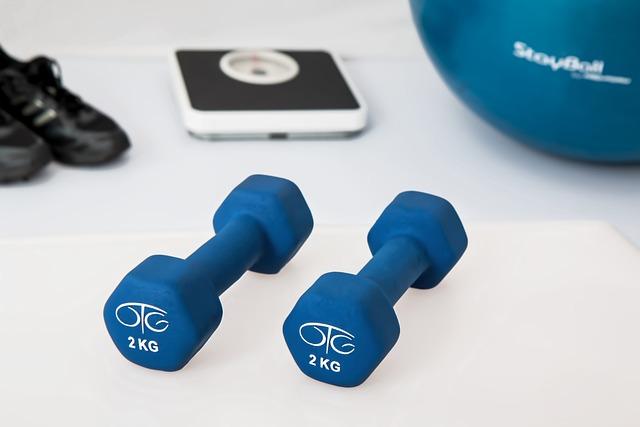In the journey towards achieving a healthier lifestyle, setting realistic goals is paramount to success. With the abundance of tools available today, a weight loss tracker stands out as a powerful ally in this endeavor. This article will guide you through the process of effectively utilizing a weight loss tracker to set achievable goals, ensuring that your path to weight loss is not only measurable but also sustainable. By understanding how to set clear objectives and monitor your progress, you can transform your aspirations into tangible results. Whether you are just beginning your weight loss journey or seeking to refine your strategy, this comprehensive guide will provide you with the authoritative insights needed to harness the full potential of a weight loss tracker.
Understanding the Importance of Realistic Goal Setting
Setting achievable objectives is a critical step in the journey to weight loss success. Unrealistic goals can lead to frustration and discouragement, while attainable targets keep motivation high and progress steady. A weight loss tracker is an invaluable tool in this process, providing a clear picture of your current status and helping to outline a path forward. To maximize its effectiveness, it’s essential to set SMART goals—Specific, Measurable, Achievable, Relevant, and Time-bound. By doing so, you create a roadmap that is not only clear but also adaptable to your unique needs and lifestyle.
Consider the following strategies to ensure your goals remain realistic and within reach:
- Break down larger goals: Instead of aiming to lose 50 pounds, focus on losing 5 pounds at a time. Smaller milestones can make the journey feel less daunting.
- Track and adjust: Regularly update your weight loss tracker to monitor progress. Use this data to adjust your goals as needed, ensuring they remain challenging yet achievable.
- Celebrate small victories: Acknowledge and reward yourself for meeting interim goals. This keeps motivation high and reinforces positive behavior.

Choosing the Right Weight Loss Tracker for Your Needs
Finding the perfect weight loss tracker can significantly impact your journey toward achieving your health goals. Consider your personal preferences and lifestyle when choosing a tracker. Do you prefer digital apps or physical journals? Digital apps often offer the convenience of syncing with other devices and real-time updates, while physical journals provide a tactile, distraction-free experience. Additionally, assess whether you need a simple tool for logging meals and workouts or a comprehensive app that includes features like barcode scanning, community support, and personalized feedback.
- Compatibility: Ensure the tracker integrates with your current devices and platforms.
- User Interface: Choose a tracker with an intuitive and easy-to-navigate interface.
- Features: Look for features that align with your specific goals, such as calorie counting, exercise tracking, or water intake monitoring.
- Cost: Decide if you’re comfortable with a free version or if a premium subscription fits your budget for added benefits.
Prioritize what motivates you—some people thrive on social accountability and might benefit from trackers with community features, while others prefer private, introspective tracking. Ultimately, the right tool should not only fit your technical requirements but also inspire and encourage you throughout your weight loss journey.

Integrating Goal Tracking with Personalized Diet and Exercise Plans
To successfully reach your weight loss goals, it’s crucial to combine goal tracking with personalized diet and exercise plans. This integration allows for a more structured approach that considers individual preferences and needs. Start by assessing your current lifestyle and health metrics to determine realistic targets. Utilize a weight loss tracker to monitor progress, as this provides a clear picture of what adjustments may be necessary along the way. A personalized plan should include the following elements:
- Diet Customization: Tailor your meal plans to fit your nutritional needs and preferences. Incorporate a balance of macronutrients and consider any dietary restrictions or preferences.
- Exercise Regimen: Develop a workout schedule that aligns with your fitness level and goals. Include a mix of cardio, strength training, and flexibility exercises.
- Regular Reviews: Periodically evaluate your progress using the weight loss tracker and adjust your plans accordingly. This ensures you remain on the right path and can make informed decisions.
By aligning your goals with a personalized approach, you create a sustainable path to success. This method not only helps in maintaining motivation but also fosters a deeper understanding of your health journey.

Monitoring Progress and Adjusting Goals for Long-term Success
To achieve long-term success in your weight loss journey, it’s crucial to consistently evaluate your progress and make necessary adjustments to your goals. A weight loss tracker serves as an invaluable tool in this process, offering you a clear visual of your achievements and areas that require improvement. Begin by setting specific, measurable, and time-bound goals. For instance, instead of aiming to “lose weight,” set a target like “lose 5 pounds in the next four weeks.” As you track your progress, pay attention to patterns and potential setbacks, and be ready to adapt your goals to better align with your current situation and capabilities.
- Evaluate Your Progress: Regularly review your tracker to assess whether you are on track to meet your goals. This helps in identifying any consistent patterns, such as weight plateaus or periods of rapid loss.
- Adjust Goals Accordingly: If your current goals are too challenging or too easy, don’t hesitate to modify them. Make adjustments based on your progress, such as changing your target weight or adjusting your timeline.
- Incorporate Feedback: Use the data from your tracker to understand what strategies are working. For example, if a particular workout routine or dietary change is yielding positive results, consider integrating it more regularly into your plan.
By continuously monitoring your progress and adjusting your goals as needed, you create a dynamic and responsive weight loss plan that is more likely to lead to sustained success. Remember, flexibility and adaptability are key components of any successful weight management strategy.
